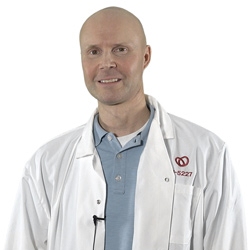Scientists at the University of Ottawa Heart Institute (UOHI) have developed a promising new therapy that successfully targets methylglyoxal (MG), a molecule that “toxifies” the heart following a heart attack, according to a study published in Advanced Functional Materials.
Under normal conditions, an enzyme metabolizes MG and removes it from the heart as part of the body’s natural physiological processes. However, MG intensely accumulates in the heart following a heart attack – clinically called a myocardial infarction (MI) – and overwhelms the body’s ability to get rid of it.

“This toxic accumulation of MG contributes to the adverse changes in the size, shape, structure and function of the heart and ultimately leads to heart failure in many patients,” explained Dr. Erik Suuronen, director of the Biomaterials and Regeneration Program at the UOHI and one of the pioneers of this novel therapy, together with fellow UOHI researchers Dr. Emilio Alarcon and PhD candidate Cagla Cimenci.
In their recently published study (Combined Methylglyoxal Scavenger and Collagen Hydrogel Therapy Prevents Adverse Remodeling and Improves Cardiac Function Post-Myocardial Infarction), the authors detail how injecting a collagen gel containing a natural flavonoid called fisetin directly into damaged heart tissue significantly reduced the accumulation and negative effects of MG following a heart attack.
“Fisetin, which is the therapeutic we chose to use due to its antioxidant properties and ability to reduce inflammation, is mixed in with the collagen gel to help keep it in the heart,” explained Dr. Suuronen. “If we had just injected fisetin by itself, the heart would have simply pumped it out, leaving very little to benefit the heart.”
The injected collagen gel is targeted by MG, sequestering it away from the heart tissue and reducing its contribution to the formation of MG toxicity. As the hydrogel is broken down within a week of injection, the “trapped” MG is then removed from the tissue.
While fisetin has been shown to reduce MG levels and improve health outcomes in experimental studies of neurodegenerative disorders, to date, only a few have examined its therapeutic effects in the context of heart disease, particularly after heart attacks.
“To our knowledge, our study is the first to evaluate the effect of fisetin administered directly into injured heart tissue after myocardial infarction at a clinically relevant time,” said Dr. Emilio Alarcon who, along with Dr. Suuronen (and Dr. Marc Ruel), is a founding member of the BioEngineering and Therapeutic Solutions (BEaTS) laboratory, an innovative team at the UOHI well known for their previous success in developing the world’s first injectable human collagen material.
In the experimental new therapy, the sequestering or “sponging up” effect of the fisetin-loaded gel was greatest when injected six hours after the heart attack – a clinically significant finding for a treatment protocol as it mimics the typical timing of an acute heart attack patient presenting at the emergency room.
Lending further optimism to their experimental therapy, the fisetin-loaded gel was injected into the heart tissue via a minimally invasive ultrasound-guided procedure. In clinical practice, this could thus be translated into using increasingly routine catheter-based delivery approaches in cardiac procedures.
“Taken together, the results suggest targeting methylglyoxal metabolism in heart attack patients may reduce the number of patients who will progress to heart failure and increase the number who fully recover,” said Dr. Suuronen.
With cardiovascular disease being the most common underlying cause of death globally, claiming 17 million lives each year, the research of Dr. Suuronen et al provides new hope for people who suffer from heart attacks.
“There are approximately 600,000 patients living with advanced heart failure in Canada alone,” said Dr. Suuronen. “As a solid step toward realizing a biomaterial therapy for treating heart attack patients, this research has the potential to significantly improve not only the health of Canadians, but people around the world.”

